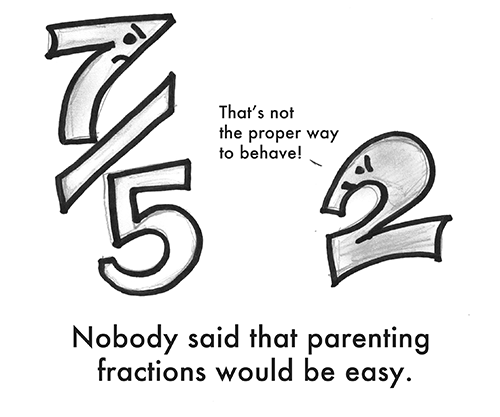
What are the instructions that you’ll see on the SAT? And are they important? In this article I’ll take a closer look at the directions you’re given on the test and tell you what parts of them are most critical for earning high scores!
Instructions? What Instructions?
On the SAT, you’ll see instructions on every section about how to answer questions as well as instructions on your answer sheet about how to select and fill in answers. What follows are the instructions that you should expect to see for different parts of the test laid out section by section. I’ll also go into more detail and show you the instructions for different types of questions within the three sections so you’ll be prepared for everything!
Answer Sheet Instructions
You will get a set of overall multiple choice instructions on the answer sheet that look like this:

This is demonstrating how you should fill in answers to get credit for your responses. Make sure you bring a couple of #2 pencils to the test so that you have a backup in case one breaks! Don't use mechanical pencils. You should also follow the instructions for filling in circles darkly and completely. If you erase any answers, do it thoroughly, and bring an extra eraser just in case.
Instructions for All Multiple Choice Sections
The one direction you’ll see at the end of every section of the SAT is this:

On the SAT, you can’t turn back to a previous section and answer questions you skipped or flip to the next section and start looking at questions early. If you do, it’s considered cheating! Everyone must have the same amount of time for each section. If you turn back, you’re giving yourself extra time, which is unfair to other students.
SAT Reading Instructions
On the new SAT Reading section, all questions are passage-based (no more sentence completion questions with crazy vocabulary!). Here are the overall instructions for the Reading section:

You’ll see both single passages and paired passages, and some may be accompanied by relevant graphics. There are 52 questions in total that are asked over the course of five different passages or pairs of passages. These questions are based on information in individual passages, relationships between paired passages, or relationships between passages and graphics.
When it says to choose the best answer to each question based on what’s “stated or implied”, this is an opportunity for slight confusion. Something being implied on the SAT is not exactly the same as something being implied in real life or in reading for an English class. The implication has to be very direct in order for you to take it as evidence for the answer to a question on the SAT. Since the SAT is standardized, there can be no room for subjectivity in answers. If you think something has been implied, make sure your thoughts are based on concrete evidence provided by the passage and not pure assumptions.
SAT Writing Instructions
The SAT Writing section has been simplified in a way on the new SAT. All questions are now passage-based (just like the Reading section). Here are the directions you'll see at the beginning of the section:

Basically, the directions explain that questions will ask you to improve the quality of writing in each passage by correcting grammar errors, fixing sentence and paragraph structure, and revising word usage. Much like the Reading section, passages in the Writing section are sometimes accompanied by tables or graphs that you'll need to consider as you answer questions. In most cases, question numbers are inserted into the passages indicating which sentence or word you will potentially need to revise.
SAT Math Instructions
There are two math sections on the new SAT: the first section does not allow the use of a calculator, and the second section does. Both sections include multiple choice and grid-in questions. The first section has 20 questions, 15 of which are multiple choice and five of which are grid-ins. The instructions that you’ll see at the beginning of the section look like this:

Key points to keep in mind based on the instructions are:
- Use the space you’re given! Don’t hesitate to write things out if you’re unsure about them in your head.
- The diagrams are there to help you. They're drawn to scale, so use them for reference.
- The domain of a function on the SAT is always all real numbers unless otherwise indicated.
I also included all the formulas that are provided for this section. Even though they’ll be there on the test, you might still decide to memorize these formulas. You'll waste valuable time if you keep needing to flip back to the first page of the section.
For the last five grid-in math problems in this section, you’ll see the following instructions:

Key points to remember from these instructions:
- Fill in the circles completely and correctly. DON’T just write the numbers in the boxes because that’s not the part that’s going to be scored by the machine.
- There are no negative answers for grid in questions.
- If you get a mixed number fraction for an answer, turn it into an improper fraction or a decimal before gridding it in.
- Leave any columns you don’t need blank.
- If you get a long decimal answer that won’t fit in the grid, round it, but make sure it fills the entire grid so it’s the most accurate possible response.
The second math section has 38 questions that you will answer over the course of 55 minutes. It includes 30 multiple-choice questions and eight grid-in questions. The only difference in the instructions for the second section is that the use of a calculator is allowed. Remember that you can use your calculator as much or as little as you want. There will be cases in this section where it's actually faster NOT to use your calculator, so be mindful of which method makes the most sense for each question.

Woo...oh man...excuse me while I wipe away tears of mirth.
SAT Essay Instructions
The instructions for the now optional SAT essay look like this:

To make sense of these instructions, it's important to understand the format of SAT essay prompts.The prompt will consist of a piece of persuasive writing. You're expected to analyze the techniques that the author uses to build his or her argument. You will need to “demonstrate that you have read the passage carefully, present a clear and logical analysis, and use language precisely." What do they really mean?
"Demonstrate that you have read the passage carefully"
This means you should frequently use direct quotes from the passage to back up your response. Make sure you fully understand the author's point and are able to explain it clearly with solid evidence. It's best to read the passage very thoroughly before you start writing and underline the most important points. This will help you to write an essay that is more mindful of the exact methods by which the author's argument is constructed.
"Present a clear and logical analysis"
Write a good introduction with a thesis that clearly states the aspects of the author's argument you plan to analyze. Use specific examples from the text to support your point in logical order. You should also write a well thought out conclusion that summarizes the main points you made in your essay about the techniques the author uses to build an argument.
"Use language precisely"
Try to use advanced vocabulary words, but only if you’re very confident with them. Using a word incorrectly could hurt you. Make an effort to avoid repetition and create smooth transitions between your thoughts.
The rest of the instructions tell you to be careful with your handwriting and to write only in the lines on your answer sheet. If you think you’re going to have a problem with writing legibly, you might want to look into testing with accommodations. You may be able to type your essay in extreme cases.
The instructions also reiterate that you need to use a #2 pencil, write on the answer sheet and NOT in the test booklet, and stay on topic!
Conclusion
To save yourself time on test day, you should understand the instructions for each section before you sit down to take the SAT. The new SAT has four sections, each of which is accompanied by one or more unique sets of instructions. All questions on both the Reading and Writing sections are multiple-choice and passage-based, and the two Math sections contain both multiple-choice questions and grid-in questions. The essay now involves analyzing how a persuasive argument is constructed by the author of a given passage. Now that you're armed with this background information, the foundation is laid for you to take some real practice tests!
What's Next?
For more quick facts about the SAT, check out these 21 SAT tips and tricks you can use to raise your scores!
Still not sure what score you should be aiming for on the SAT? Read this guide to learn how to calculate your target score.
If you're looking to register for the test, learn whether the next date is best or if you should hold off until later.











